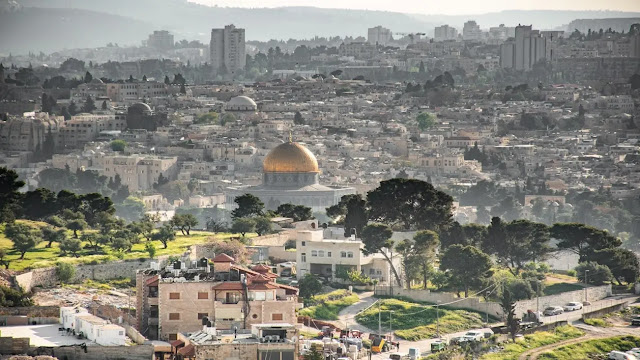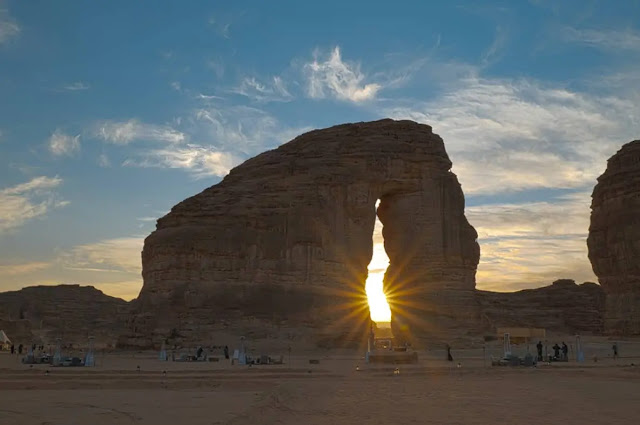Mysterious City of White Towers in the Gobi Desert

|
| The striking white towers of Khara Khoto rise from the desert landscape as if in a dream |
Yet, as travelers approach, an eerie sense pervades the air—an emptiness that speaks of the absence of life. What was once a vibrant city is now a ghost town. What might have flourished within its walls is now buried under the shifting sands of time.
What happened?
The Mystery of Khara-Khoto

|
| The city has a square layout, protected on all sides by strong walls with watchtowers.Why were such strong security measures implemented? What were they so afraid of? |
The Origins of the City

|
| The city is surrounded on all sides by deadly deserts |
The city's unusual number of temples and monasteries is a remarkable feature. The city's numerous monasteries, despite its strategic position on trade routes, make it look like a city of monks instead of merchants, which adds to the mystery of Khara-Khoto. Excavations conducted in the 20th century revealed a plethora of religious texts, confirming the town's strong religious influence. Marco Polo recounted a forty-day camel journey through the surrounding desert without encountering any other town or habitation, which made the city remarkably isolated. The ruins' remote location poses a challenge for making them a more attractive tourist destination even today, even though his account may be somewhat exaggerated.
The Discovery of Khara-Khoto
Starting in November 1907, the expedition faced challenges in finding the elusive ruins, as Chinese and Mongolian authorities seemed determined to keep the city's location secret from intruders. Despite the obstacles, the Russians enlisted the help of a local guide named Bata. The expedition, led by Bata, finally reached the city in the middle of the desert on March 19, 1908.
 |
| The layout of the city |
The explorers came across impressive walls that formed a square perimeter, and two mausoleums on the western side were almost in ruins. The structures were almost completely buried in sand, except for the western wall. The city resembled a fairytale story.
Starting their archaeological digs, the team unearthed an array of artifacts in just the first few days, including books, letters, metal and paper currency, women's jewelry, and household items. The mausoleum, later titled 'Famous', proved to be a particularly valuable treasure trove, revealing a large library that contained up to 2000 scrolls. Metal and wooden figurines were discovered by the researchers, which were remarkably preserved due to the arid desert climate. Other artifacts also included over 3500 paintings of Buddhist and Christian saints.
The Legendary Tales of Khara-Khoto
In a legend, Khara Bator, a Mongol military general, was surrounded by his troops in 1372 by the Ming dynasty's armies, causing a major water supply problem in the city. As a consequence, Khara-Khoto was denied water for its gardens and wells by the Chinese. With time, Khara Bator became aware of the hopeless situation and by breaking through the northwestern corner of the city wall, he and his most loyal soldier escaped into the desert and were never seen again. The legendary story can still be confirmed by the fact that a rider can pass through a breach in the walls in the ruins today.
In the end, the city was taken by Ming General Feng Sheng. The town's defenders either gave in or died, and thousands of residents were taken captive by the Ming troops. After the defeat, and possibly due to a real water shortage, the city was abandoned and left in ruin. However, its extremely remote location prevented it from being looted.
There is also another explanation for why the city was abandoned. This legend states that Feng Sheng released desert jinns from their confinement, where they had been held captive by a strong magical seal.

|
| According to legends, the 'ancient shadows' emerged from a monastery in the city after the protective seal was broken |
According to the legend, General Feng Shen was a man who was both proud and self-centered. When he learned that there was an entrance into the underworld under one of the monasteries, he decided that he must see it. He called all the monks and had them explain to him what was behind the closed doors, on which hangs a seal with written ancient letters. He asked for the seal to be cleaned so that he could better see what was written there. He was surprised when he saw it written on the seal:
The doors will only be opened by General Feng Sheng the Great in the future.
Delighted that his name was written on the seal in such a laudatory tone, he said to the abbot.
You tried to make me fool. You advised me to stay away from these doors, even though the seal bears my name, because you wanted to prevent me from fulfilling my great destiny predicted by the ancients centuries ago. These doors certainly contain something other than what you tried to tell me, and your fairy tales only served to hinder me from obtaining it. Whatever great thing is awaiting me there, you monks want to keep it for yourself. I will make you pay dearly for your conduct, but now I have more urgent things to do.
The soldiers were instructed to break the seal and open the doors, which according to legend unleashed an ancient danger, that has been causing mischief in the city and its surroundings since that time, which is why the city was abandoned.
.webp)


Comments
Post a Comment